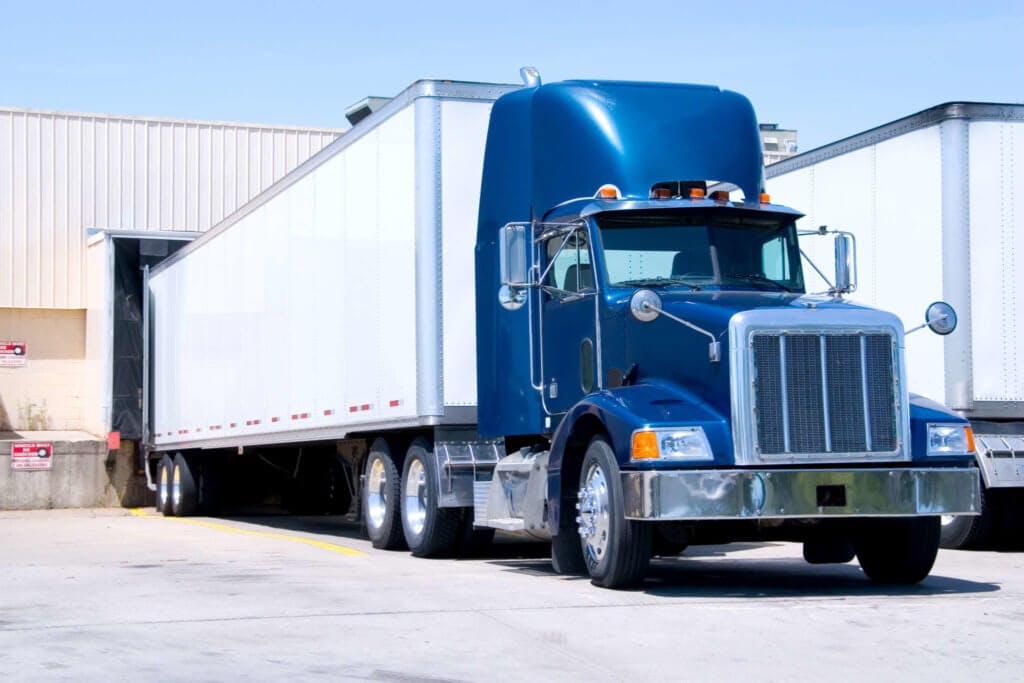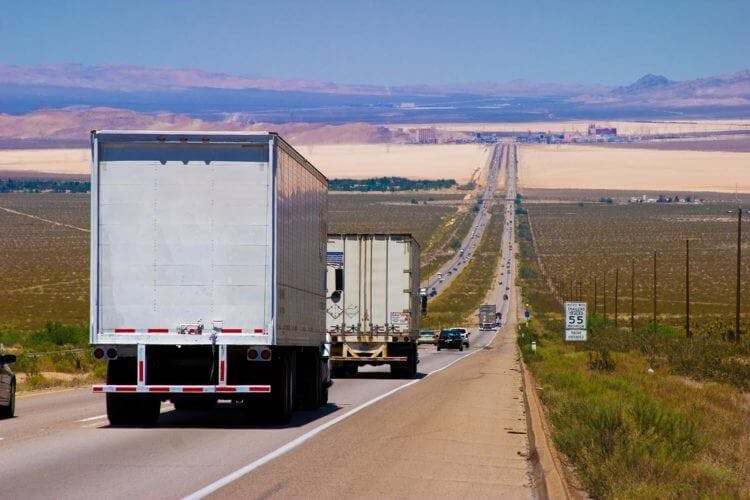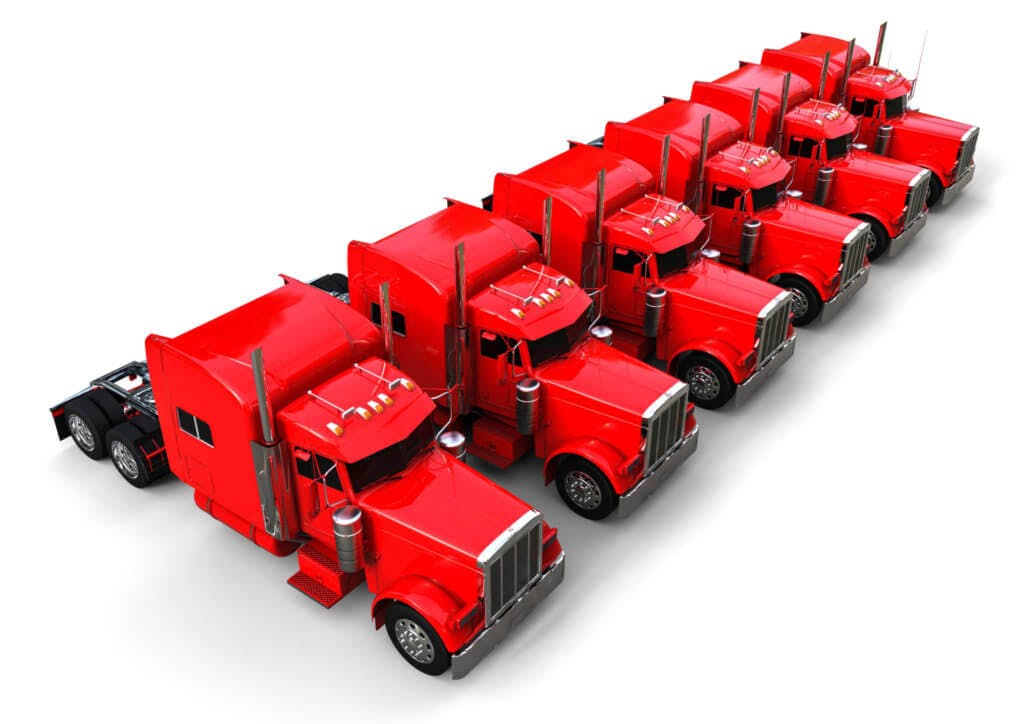The 12 Reasons Why Load Tracking is Important to Your Business
Double Down
against Fraud
Hire carriers confidently with RMIS and Carrier Assure
In this age of Amazon Prime and the increase in delivery notifications telling us the exact time to expect a package on our doorstep, it makes sense that people in transportation are looking for the same. In freight management especially, it makes sense that all parties involved would want to know where a carrier is on the way to their destination – whether they’re delivering or picking up.
Knowing where a load is at any given time means that brokers can react in real time to any problems that come up along the way.
Load tracking can help manage freight in a number of ways that will benefit a company. Read on for 12 ways that load tracking can save you money and help your business.

1. Rerouting trucks.
A lot can happen on the road that you can’t prepare for ahead of time. Things like accidents, landslides, road closures, traffic congestion, severe weather like fog, ice, or snow can wreak havoc on delivery times. If you learn about a road closure or that a severe storm is traveling through the same mountain pass as your load, respond by rerouting the truck whenever you can. This isn’t always going to work, but highway departments and weather services will often widely broadcast road closures and storm warnings. Confirm you have or are driving a truck that will be encountering road issues and reroute to avoid the situation.

2. Understanding driver detention time.
A driver typically has a scheduled two-hour block of time (leeway) to pick up or deliver a load. If a load isn’t picked up or delivered during that two-hour block of time because they’re held up at the pick-up or delivery location, a detention fee is charged to compensate the driver for their time since these situations tend to delay the driver’s next pick up or delivery.
Load tracking can help you identify if a driver is delayed at a pick-up or delivery location and detention charges are due. Plus, you can save your freight partners money by providing a proof of location when issues come up. Not only that, but if a driver is delayed, you can plan ahead for the next pick up or delivery, and reschedule it before it starts costing even more money.
3. Automatic alerts about the location of a truck.
Automatic geofencing will locate your truck within a 2-mile radius. You can set up milestones and geofencing at pick-up and delivery centers that trigger an alert to let you know a truck is leaving or arriving at a destination. It’s a great tool for improving supply chain efficiencies. Plus, it sets up a system that you don’t have to worry about it.

4. Maximizing capacity.
With load tracking, you can make better predictions about when a truck or load will arrive at a distribution or delivery center making it easier to maximize capacity. Trucks can be planned out and more tightly booked to avoid deadheading and downtime.
5. Providing good customer service.
Being able to report back to brokers where a load is helps establish competency and provides a sense of security. For carriers, being able to offer load tracking is an example of going above and beyond in customer service, and it helps build up a clientele of repeat customers. The bottom line is that it builds better partnerships across brokers, carriers, and customers.

6. Eliminating check calls.
There’s no need to make check calls and disrupt a driver when you can do a quick load check and see where the freight is on a map. It’s safer for the driver because they don’t have to respond while driving or find a place to pullover to respond. It also saves brokers time trying to connect with the driver which makes for better office efficiencies. Better efficiencies means a better bottom line.
7. Better labor management.
Since load tracking makes it easier to plan ahead, you can better manage dock labor. That means happier employees working at warehouses and docks, and happier carriers delivering at warehouses and docks.
8. Adjust delivery windows.
When a truck is running early or late, distribution and delivery centers can be alerted ahead of time so they’re ready one way or another.
9. No more information void.
A driver’s location can be identified at any time, so there’s no longer a question mark over where the freight might be. This means you can be better prepared and respond appropriately in the event there’s an issue.

10. Compete with the big boys.
In a field growing increasingly high tech, being able to offer load tracking is becoming a more standard expectation. With freight solutions at your fingertips, smaller carriers and owner-operators can compete with the bigger freight management companies at a cost reasonable to their business.
11. Stand out in the marketplace.
Offering load tracking is an easy way for truck drivers to differentiate themselves in the marketplace. It’s also an easier way for everyone to stay in contact.

12. Make more money.
For all of the reasons listed above, a broker or carrier stands to make more money. With data at your fingertips, you can both prepare for and react to the many things that can come up in freight management. That means better time management, better customer service, and more money in your pocket that can be used to grow a business.

More and more freight management professionals – from manufacturers and shippers to distribution centers and owner-operators – are asking questions about shipments. Is the load going to be on time? Has there been any disruptions? Why is there a detention fee? Where exactly is the shipment at this moment? What can be done ahead of time to ensure on-time delivery?
As a result, it’s becoming increasingly mainstream to provide real-time visibility into the movement of freight. Providing transparency means potential supply chain disruptions can be managed before they become a bigger, more expensive problem.
Want to know more?
- There’s a lot of myths about load tracking; for example, the app shares information about carriers with law enforcement and the Department of Transportation – none of which are true.
- Are you a broker that wants to know more about successful load tracking? Read more about successful load tracking.
Topics:

Find out how our platform gives you the visibility you need to get more done.
Get helpful content delivered to your inbox.
Schedule a demo.
Find out how our platform gives you the visibility you need to get more done.





